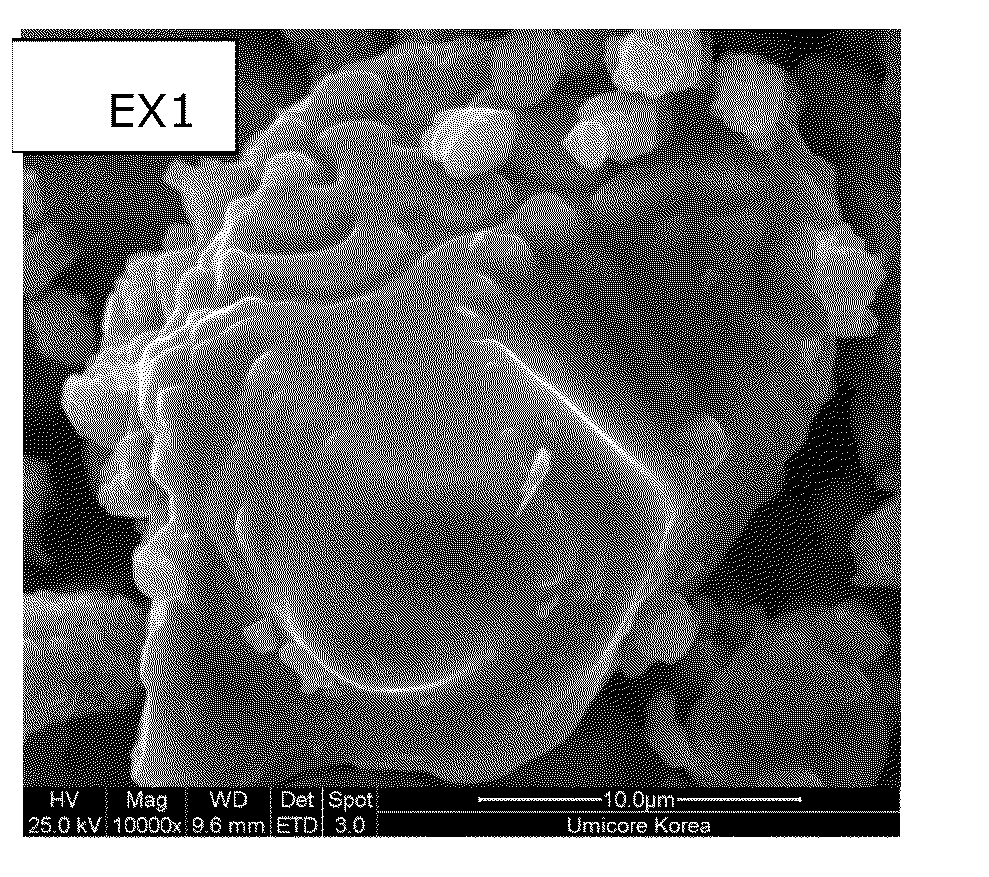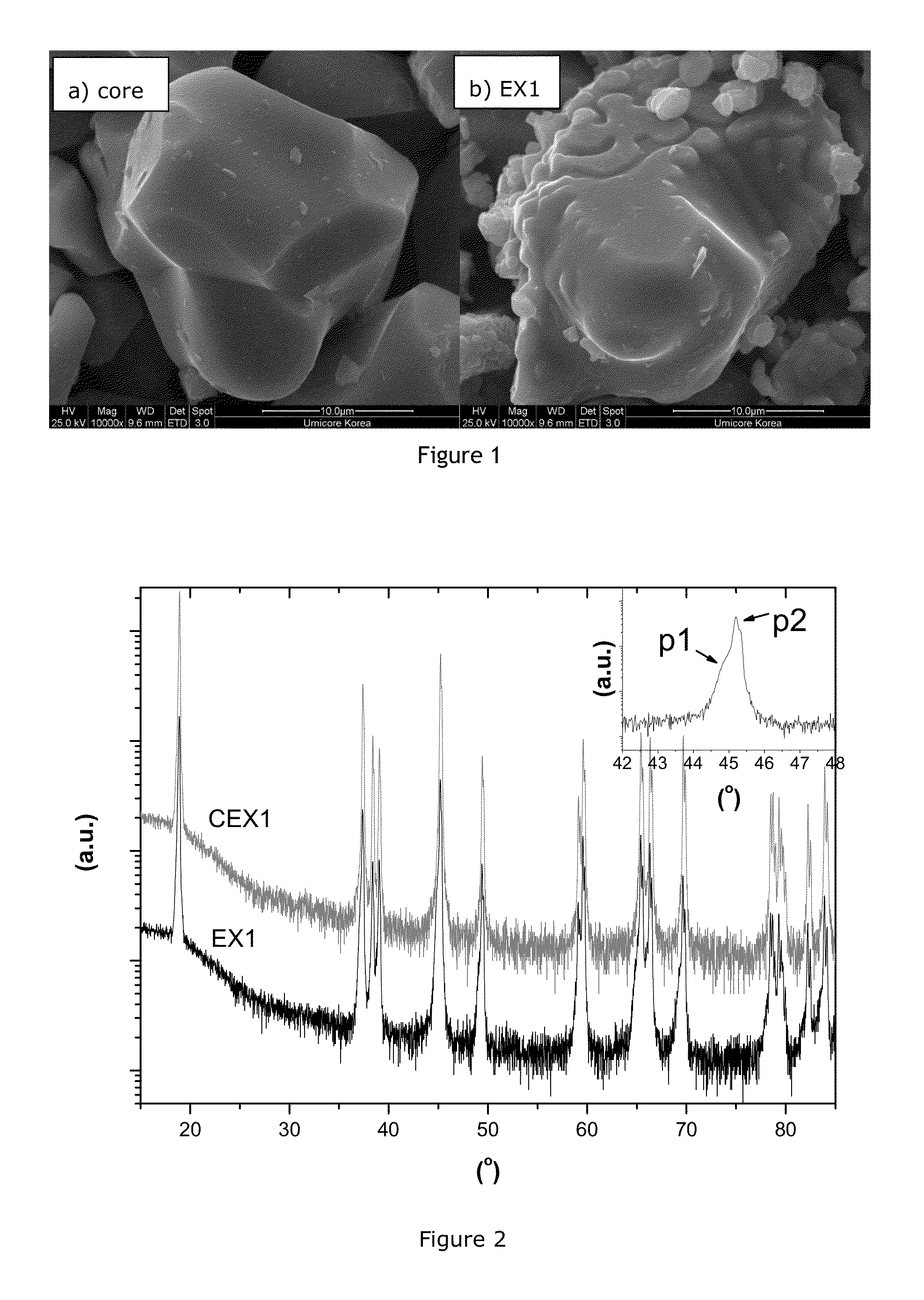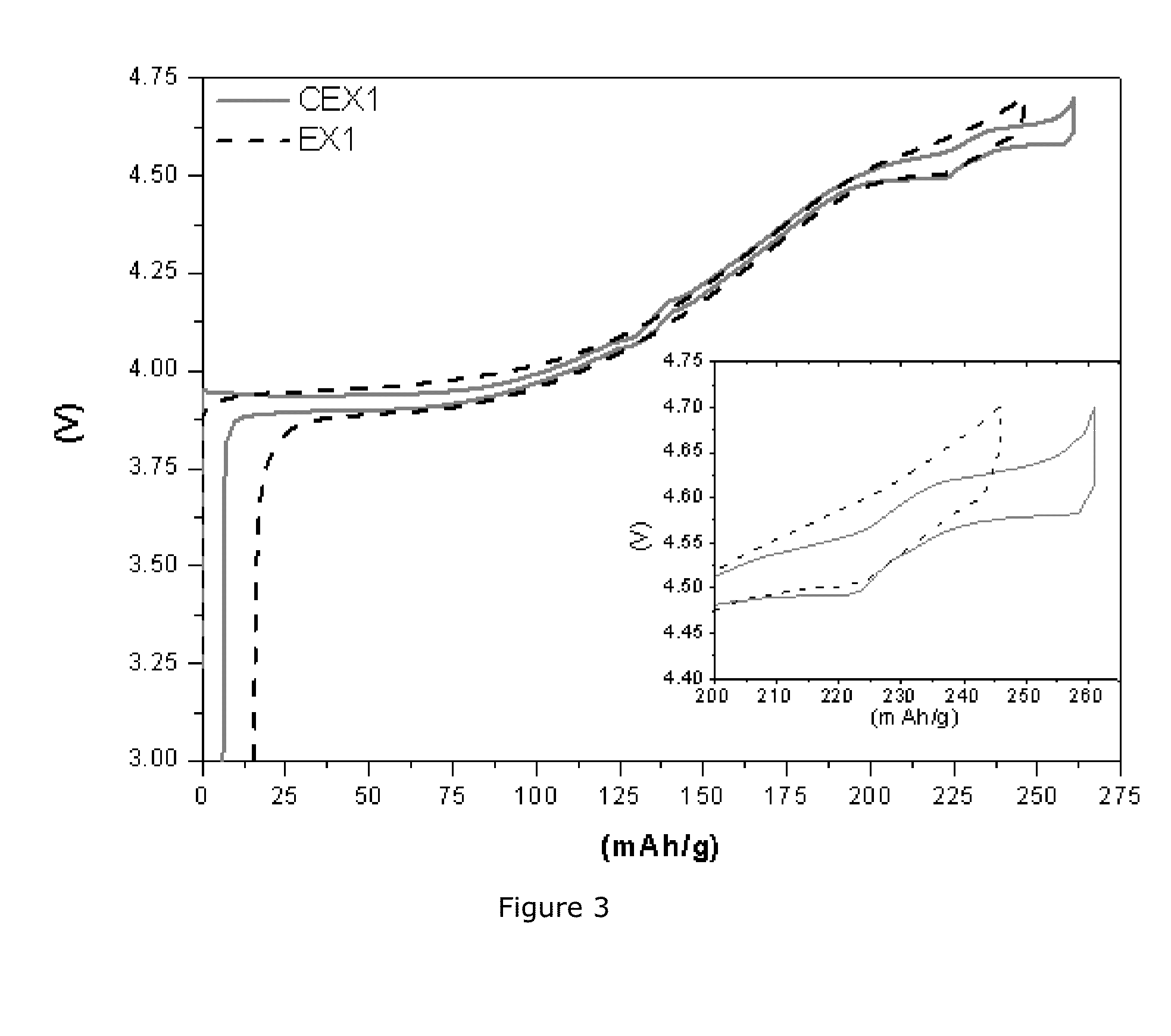Doped and Island-Covered Lithium Cobaltite Oxides
a lithium cobaltite oxide, island-covered technology, applied in the direction of cobalt compounds, nickel compounds, inorganic chemistry, etc., can solve the problems of poor storage properties, poor safety and high cost of licoo, and low safety
- Summary
- Abstract
- Description
- Claims
- Application Information
AI Technical Summary
Benefits of technology
Problems solved by technology
Method used
Image
Examples
example 1
[0068]Preparation of the Mg and Al doped LiCoO2-based core: lithium carbonate, tricobalt tetroxide, magnesium carbonate and aluminum oxide are mixed in a molar ratio of 1.05 / 0.98 / 0.01 / 0.01 using a pilot scale equipment. 3.2 kg of the mixture is then put in a 5.9 L mullite sagger and fired at 980° C. for 12 h in an air flow of 4 m3 / kg. The sintered cake is milled and classified resulting in a powderous materials with an average particle size D50 of 21.4 μm and a D100 of 71.0 μm, with a general composition of Li1.05Co0.98Mg0.01Al0.01O2±δ. Some departure from the oxygen stoichiometry “δ≦0.2” is possible but has not been precisely characterized in the present case. Scanning electron images of the Mg and Al doped LiCoO2-based core is shown on FIG. 1a. The core particles feature a dense potato-shape morphology.
[0069]Preparation of the core-shell LiCoO2-based materials. The Mg and Al doped LiCoO2-based core powder is further mixed with a Ni0.55Mn0.30Co0.15(OH)2 powder with a D50 of 3 μm, i...
example 2
[0081]This example will demonstrate a synergetic effect between Al doping and the core-shell structure of the LiCoO2-based materials. Preparation of EX2 cathode material: 1 mol % Mg-doped lithium cobalt oxide with dense and monolithic morphology and with a D50 of about 20 μm is prepared at pilot scale in a similar way as for EX1, but without addition of an Al precursor. The Mg-doped LiCoO2-based core powder is further mixed with a Ni0.55Mn0.30 Co0.15(OH)2 powder with a D50 of 3 μm in a molar ratio of 95 / 5. 3.0 kg of the mixture is then put in a 2.3 L mullite sagger and fired at 1000° C. for 8 h in air. The sintered cake is milled and classified, resulting in a powderous materials with a BET surface area of 0.19 m2 / g. This sample is labelled EX2. The chemical composition of EX2 is further determined with inductively coupled plasma atomic emission spectroscopy, resulting in a Li, Co, Ni, Mn and Mg molar ratio of 0.99 / 0.947 / 0.028 / 0.015 / 0.010, which is in very good agreement with theore...
PUM
| Property | Measurement | Unit |
|---|---|---|
| electrical conductivity | aaaaa | aaaaa |
| pressure | aaaaa | aaaaa |
| density | aaaaa | aaaaa |
Abstract
Description
Claims
Application Information
 Login to View More
Login to View More - R&D
- Intellectual Property
- Life Sciences
- Materials
- Tech Scout
- Unparalleled Data Quality
- Higher Quality Content
- 60% Fewer Hallucinations
Browse by: Latest US Patents, China's latest patents, Technical Efficacy Thesaurus, Application Domain, Technology Topic, Popular Technical Reports.
© 2025 PatSnap. All rights reserved.Legal|Privacy policy|Modern Slavery Act Transparency Statement|Sitemap|About US| Contact US: help@patsnap.com



